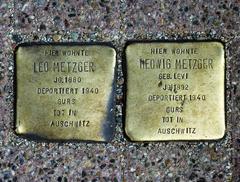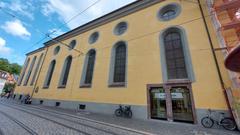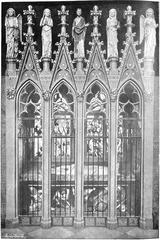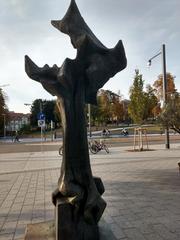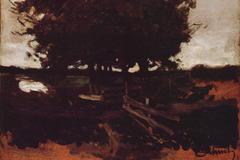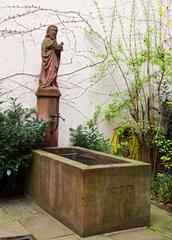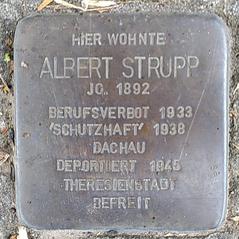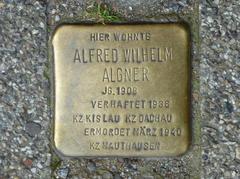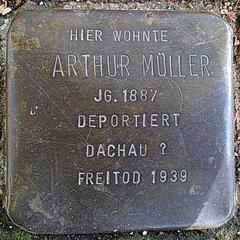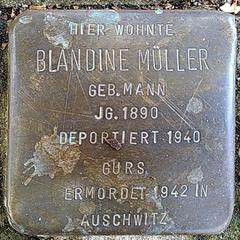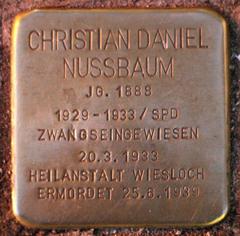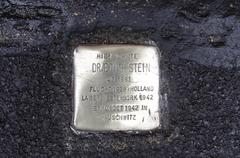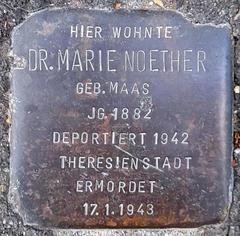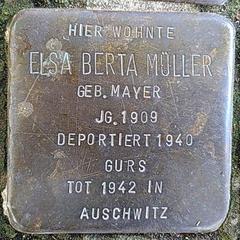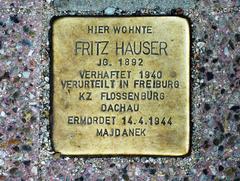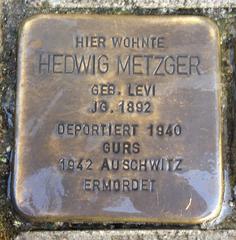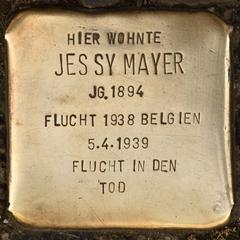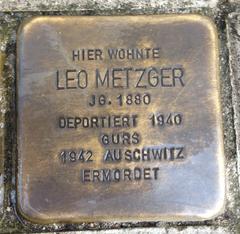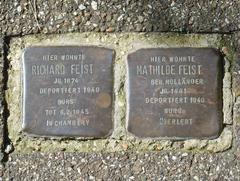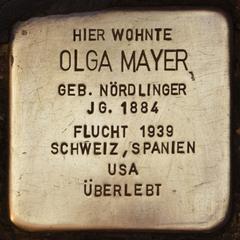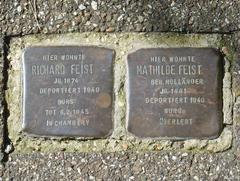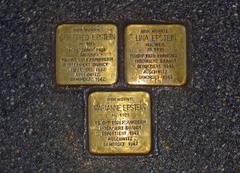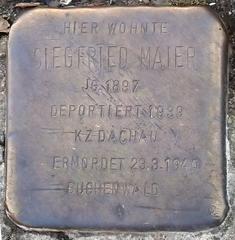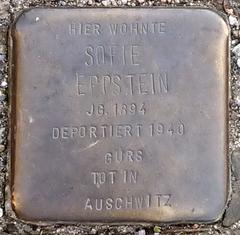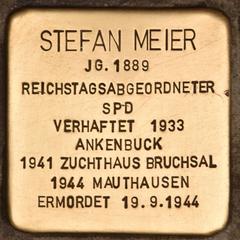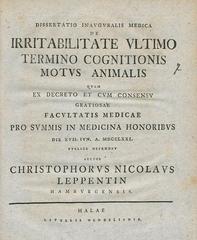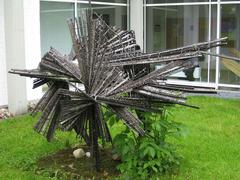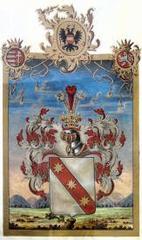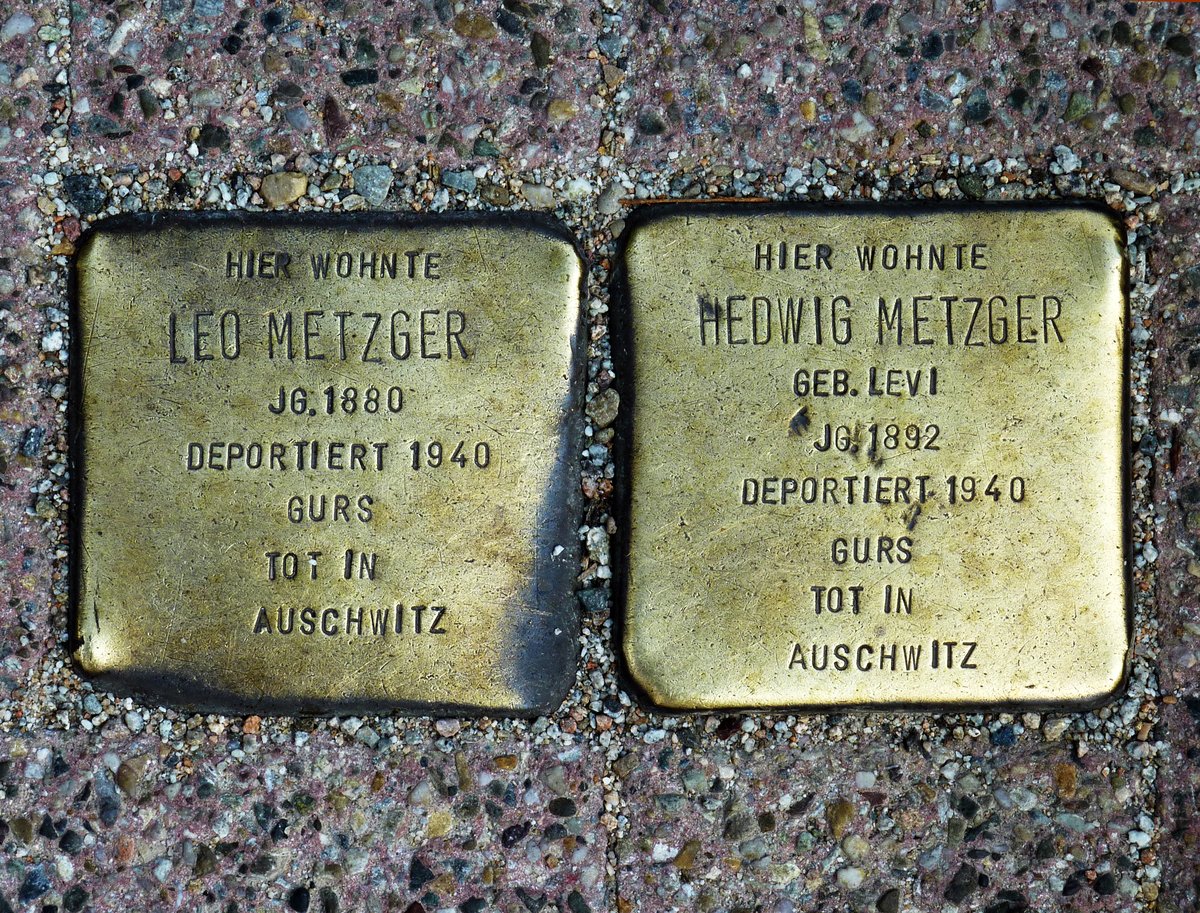
Stolperstein Leo Metzger Freiburg: Visiting Hours, Tickets, and Historical Significance
Date: 14/06/2025
Introduction
The Stolperstein dedicated to Leo Metzger in Freiburg im Breisgau offers a deeply moving and personal window into the city’s Jewish history and the devastating impact of the Holocaust. Stolpersteine—German for “stumbling stones”—are small brass plaques embedded in the pavements of cities across Europe. Each one commemorates a victim of Nazi persecution at their last freely chosen residence. Initiated by artist Gunter Demnig in 1992, the Stolpersteine project has become the world’s largest decentralized memorial, with over 100,000 stones in 26 countries as of 2025. These stones serve as powerful reminders of individual lives lost, integrating remembrance into daily urban life (Stolpersteine in Freiburg, BBC Travel, Smithsonian Folklife Magazine).
Leo Metzger’s Stolperstein is found at Zunftstraße 7 in Freiburg’s historic city center, marking the last freely chosen residence of this Jewish citizen persecuted under the Nazi regime. Freiburg is home to over 270 Stolpersteine, reflecting its commitment to Erinnerungskultur—the culture of remembrance—and the ongoing effort to honor those whose lives were destroyed (Denkmalprojekt, IamExpat).
This comprehensive guide explores the Stolpersteine project’s origins, symbolism, and artistic impact, as well as practical visitor information, ethical considerations, and recommendations for respectfully engaging with Leo Metzger’s memorial.
Table of Contents
- Introduction
- The Origins and Concept of Stolpersteine
- Symbolism and Artistic Impact
- Stolpersteine in Freiburg im Breisgau
- Visiting Stolpersteine in Freiburg: Hours, Accessibility, and Tips
- Community Engagement and Educational Value
- Broader Historical and Cultural Significance
- The Leo Metzger Memorial: Historical Background and Visitor Information
- Ethical Considerations
- FAQ
- Visitor Recommendations and Summary
- Sources
The Origins and Concept of Stolpersteine
Launched in 1992 by German artist Gunter Demnig, the Stolpersteine project (“stumbling stones”) commemorates victims of National Socialism—including Jews, Roma, Sinti, disabled people, LGBTQ+ individuals, political dissidents, and others—by embedding small brass-plated memorials in the sidewalk outside their last self-chosen residences. Each Stolperstein is a 10 x 10 cm concrete cube topped with a brass plate engraved with the victim’s name, birth year, fate, and, if known, date and place of death (IamExpat, Germany.info).
This decentralized approach integrates remembrance into the everyday fabric of European cities, making memory visible and accessible.
Symbolism and Artistic Impact
Though “stumbling stones” are set flush with the pavement and pose no physical hazard, they are meant to make passersby “stumble” emotionally and intellectually. Each one invites those who notice it to pause, read the name, and reflect on a life violently disrupted (Germany.info). The project’s guiding principle—rooted in the Talmudic teaching that “a person is only forgotten when their name is forgotten”—restores names and stories to victims, countering the erasure perpetrated by the Nazi regime (IamExpat).
Demnig’s vision of an unobtrusive yet ubiquitous memorial has led to both praise and controversy. Some critics argue that ground-level placement is disrespectful, while others believe it is precisely this integration with daily life that ensures the persistence of remembrance (IamExpat).
Stolpersteine in Freiburg im Breisgau
Freiburg’s Stolpersteine project began in 2002 and today includes over 270 stones, each marking a victim’s last known address (Wikimedia Commons). Around Holocaust Memorial Day (January 27), local residents and organizations clean the stones, light candles, and lay flowers, maintaining an active remembrance culture (IamExpat).
Visiting Stolpersteine in Freiburg: Hours, Accessibility, and Tips
Hours and Tickets: Stolpersteine are outdoors and accessible 24/7, free of charge. No tickets or permits are required.
Accessibility: Most Stolpersteine are on public sidewalks and accessible to those with mobility challenges, though some areas may have uneven pavement.
Guided Tours and Apps: Freiburg’s museums and cultural organizations occasionally offer guided tours focusing on Holocaust history and Stolpersteine. Several apps and online maps help locate stones and provide background information (IamExpat).
Best Times to Visit: Daylight hours are recommended for ease and safety. Special remembrance events are held around Holocaust Memorial Day.
Nearby Attractions: Freiburg’s old town, Freiburg Minster, and Augustinermuseum are all within walking distance, enriching your visit with broader historical context.
Respectful Engagement: Pause to read inscriptions, consider cleaning a stone, or leave a flower or small stone in the Jewish tradition.
Community Engagement and Educational Value
The Stolpersteine project is participatory; local historians, relatives, and school groups research victims’ stories and apply for stones. Installations often feature public ceremonies, readings, and music (IamExpat). Digital tools and educational curricula further promote awareness and remembrance.
Broader Historical and Cultural Significance
Stolpersteine shift focus from the scale of the Holocaust to the humanity of its victims, underscoring that persecution happened not only in distant camps but in local neighborhoods (Germany.info). Their presence challenges indifference and denial, encouraging ongoing dialogue about memory and responsibility (IamExpat).
The Leo Metzger Memorial: Historical Background and Visitor Information
Historical Background
Leo Metzger was a Jewish resident of Freiburg whose life and family reflected the city’s once-flourishing Jewish community. After centuries of exclusion, Jews returned to Freiburg in the 19th century and became integral to its civic and economic life (Stolpersteine in Freiburg). The rise of the Nazi regime in 1933 brought systematic exclusion, expropriation, and persecution. The process of “Aryanization” saw Jewish families like the Metzgers lose their livelihoods and face growing social isolation (Stolpersteine in Freiburg).
Visiting Information
- Location: Zunftstraße 7, Freiburg im Breisgau
- Visiting Hours: Open to the public at all times (outdoor memorial)
- Admission: Free
- Accessibility: Wheelchair accessible via flat public sidewalks
- Guided Tours: Available via local museums and Freiburg’s tourism office (Freiburg Tourism)
Travel Tips
- Use public transportation or nearby parking as the city center can be crowded.
- Check Stolpersteine in Freiburg for special events and updates.
- Consider an audio guide app like Audiala for a self-directed tour.
Nearby Attractions
- Freiburg Minster
- Augustinermuseum
- Historic Old Town markets and cafes
Ethical Considerations
The Stolpersteine project’s decentralized, ground-level design aims to restore the dignity and individuality of Holocaust victims, but its approach has sparked debate. Some view stepping on names as disrespectful; others see the stones’ visibility in daily life as crucial for remembrance (Leo Baeck Institute). In Freiburg, the community embraces Stolpersteine, with descendants, schools, and organizations involved in research and maintenance (Smithsonian Folklife Magazine).
Visitors are encouraged to engage respectfully—avoiding stepping on the stones, participating in community cleaning, and being mindful of the sensitivities of descendants and survivors.
FAQ
Q: Where can I find Stolpersteine in Freiburg?
A: Throughout the city center and residential neighborhoods. Use online maps or local apps.
Q: Is there a fee to visit?
A: No; all Stolpersteine are free and publicly accessible.
Q: Are guided tours available?
A: Yes, through local museums and the tourism office.
Q: How do I find Leo Metzger’s Stolperstein?
A: Zunftstraße 7, Freiburg; consult Denkmalprojekt for precise information.
Q: Can I take photos?
A: Yes, but please be discreet and respectful.
Q: Is the site wheelchair accessible?
A: Yes, most Stolpersteine are set flush with the pavement.
Visitor Recommendations and Summary
The Stolperstein for Leo Metzger stands as a powerful symbol of remembrance, rooted in the personal story of one victim and expanding to the collective memory of Freiburg’s Jewish community. The project’s integration into daily life, combined with community engagement and educational programs, ensures that the lessons of history remain accessible and meaningful (Stolpersteine in Freiburg, Germany.info).
Visitors are encouraged to approach the memorial thoughtfully—pausing to read inscriptions, participating in cleaning ceremonies, or leaving tokens of remembrance. Complement your visit by exploring nearby historical sites, using digital guides, and engaging with local educational resources. Through such acts, you contribute to preserving memory, fostering understanding, and upholding human dignity.
For more information and the latest updates, consult official websites and follow heritage organizations on social media (Audiala App, Freiburg Tourism).
Sources and Further Reading
- Visiting the Stolpersteine in Freiburg: History, Significance, and Visitor Guide, 2024, IamExpat
- Stolpersteine Official Website, 2025
- Leo Metzger Memorial in Freiburg: Visitor Information and Historical Background, 2024, Stolpersteine in Freiburg
- Visiting the Stolperstein for Leo Metzger in Freiburg: Hours, Location & History, 2024, Denkmalprojekt
- Visiting the Leo Metzger Stolperstein in Freiburg: Ethical Reflections and Practical Guide, 2025, Smithsonian Folklife Magazine
- Leo Baeck Institute on Stolpersteine Controversy, 2025
- Germany.info: Jewish Life in Germany, 2024
- BBC Travel: The Holocaust Memorial of 70,000 Stones, 2019
- Jewish Museum Freiburg, 2024
- Freiburg Tourism Official Site, 2025
